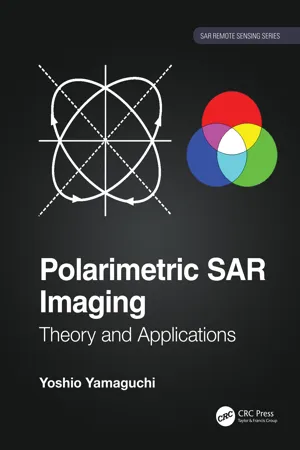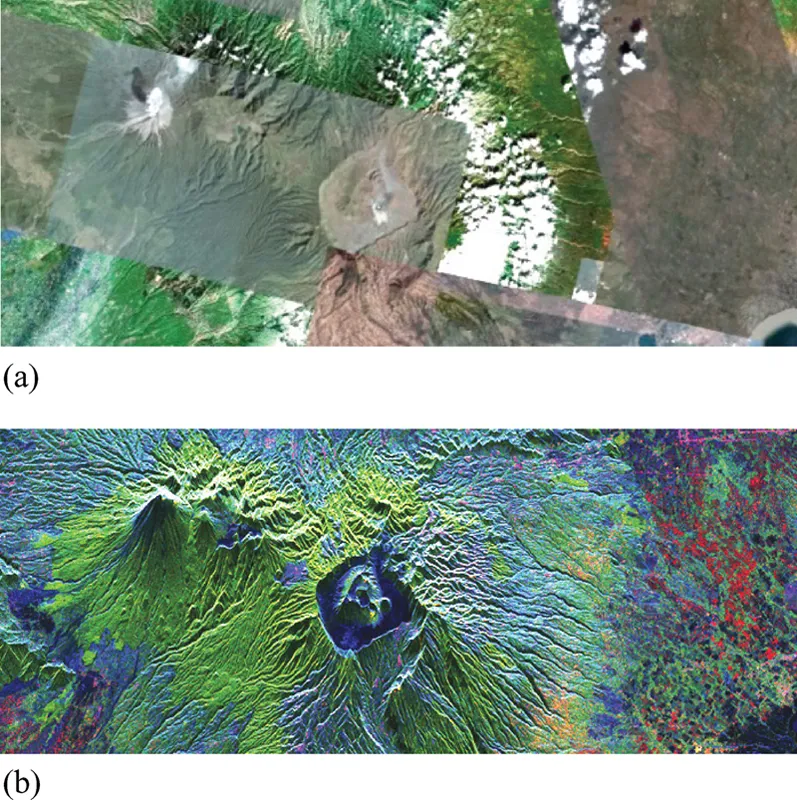
- 334 pages
- English
- ePUB (mobile friendly)
- Available on iOS & Android
About this book
Radar polarimetry has been highly sought after for its use in the precise monitoring of Earth's surface. Polarimetric SAR Imaging explains the basic concepts of polarimetry and its diverse applications including: deforestation, tree classification, landslide detection, tsunamis, volcano eruptions and ash distribution, snow accumulation, rice field monitoring, urban area exploration, ship detection, among other applications. The explanations use actual data sets taken by Advanced Land Observing Satellite (ALOS and ALOS2). With the increasing problems presented by climate change, there is a growing need for detailed earth observation using polarimetric data. As the treatment of vector nature of radar waves is complex, there is a gap between the theory and the application. Polarimetric SAR Imaging: Theory and Applications addresses and fills this gap.
Features:
- Provides cutting-edge polarimetric applications for earth observation with full color images.
- Includes detailed descriptions of theory, equations, expansions, and flowcharts, and numerous real examples.
- Explains concepts, data analysis, and applications in simple and clear language aimed at an intuitive comprehension.
- Provides specific and unique examples of PolSAR images derived from actual space and airborne systems (ALOS/ALOS2, PiSAR-x/L)
- Covers the wide range of the radar polarimetry, especially the decomposition of the polarimetry data, an original method developed by the author using the Japanese polarimetric SAR data
Illustrated in full color using images generated by polarimetric techniques, this book is easy to understand and use for both student and expert, and is an excellent resource both in the classroom and in the field.
Frequently asked questions
- Essential is ideal for learners and professionals who enjoy exploring a wide range of subjects. Access the Essential Library with 800,000+ trusted titles and best-sellers across business, personal growth, and the humanities. Includes unlimited reading time and Standard Read Aloud voice.
- Complete: Perfect for advanced learners and researchers needing full, unrestricted access. Unlock 1.4M+ books across hundreds of subjects, including academic and specialized titles. The Complete Plan also includes advanced features like Premium Read Aloud and Research Assistant.
Please note we cannot support devices running on iOS 13 and Android 7 or earlier. Learn more about using the app.
Information
1 | Introduction |
1.1 REMOTE SENSING

1.1.1 DIFFERENCE OF OPTICAL AND MICROWAVE SENSORS

1.1.2 RADAR REMOTE SENSING
Table of contents
- Cover
- Half Title
- Series Page
- Title Page
- Copyright Page
- Table of Contents
- Preface
- Acknowledgments
- Author
- Chapter 1 Introduction
- Chapter 2 Wave Polarimetry
- Chapter 3 Scattering Polarimetry
- Chapter 4 Polarization Matrices
- Chapter 5 H/A/ā Polarimetric Decomposition
- Chapter 6 Compound Scattering Matrix
- Chapter 7 Scattering Mechanisms and Modeling
- Chapter 8 Scattering Power Decomposition
- Chapter 9 Correlation and Similarity
- Chapter 10 Polarimetric Synthetic Aperture Radar
- Chapter 11 Material Constant
- Chapter 12 Interpretation of PolSAR Images
- Chapter 13 Surface Scattering
- Chapter 14 Double-Bounce Scattering
- Chapter 15 Volume Scattering
- Index